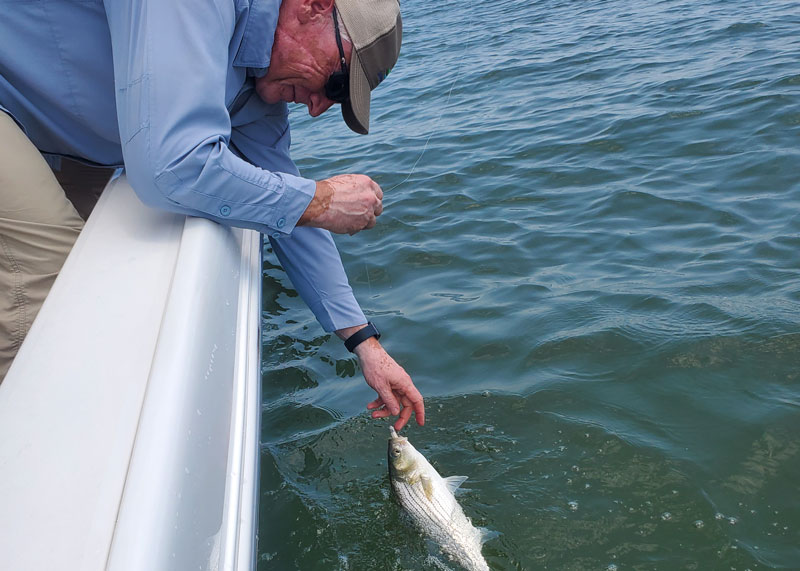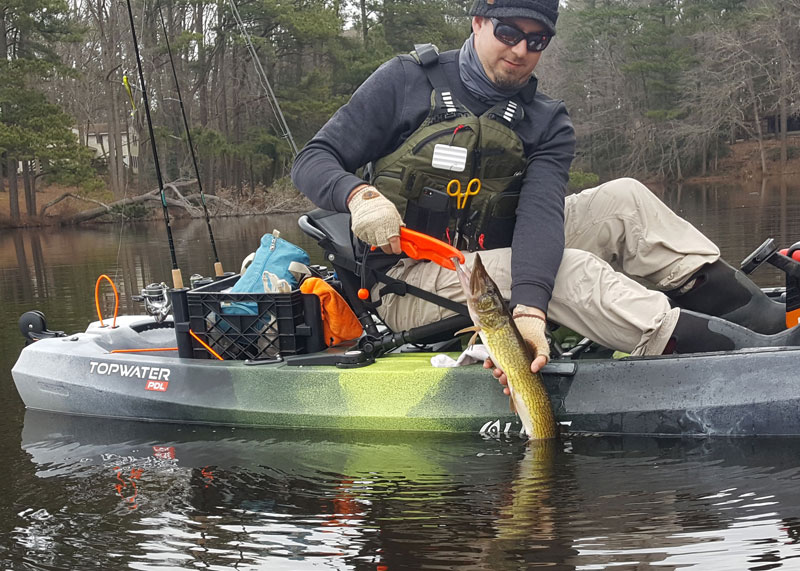Editor’s Note: We’ve covered catch and release best practices more than once, but in the past year have received numerous letters and emails from concerned anglers asking us to beat that drum again — and beat it louder. We ask your forgiveness if we sound redundant but everyone could use a refresher now and again, and remember that we also have an influx of new anglers hitting the water every year. If the information in this article seems like old hat, maybe pass it on to someone who might not be as experienced.

Whether you look at it from an economic standpoint, through a moral lens, or just as a matter of recreation, each and every fish out there has inherent value. When we take a fish home and serve it for dinner that value is realized. When we carefully and gently release a fish — and it makes us smile — that value is realized. And when we buy a new rod or fill the boat’s fuel tank that value is realized. But when we toss a fish that’s as good as dead overboard, that value is lost. You probably already know this. But, just how much value do you assign each and every fish? How willing are you to slow down and take care to remove a hook without causing damage when there’s a feeding frenzy taking place, and much bigger, more attractive fish are a mere cast away? Will you make the effort to lean over and get your hands wet to keep an undersized fish in the water on a chilly December afternoon? Just where do you, personally, set the bar? Have you ever even considered this question?
I have to admit that I’ve been guilty of fish abuse in the past. Never intentionally, of course, but in the heat of the moment I may have been rougher than necessary on a fish to speed the dehooking process. Then some years ago I watched an angler on my boat wrap his hand around a 10-inch rockfish and squeeze it so hard its eyes were bugging out (literally), as he ripped the hook free and took a chunk of the fish’s jaw with it. I got angry. First at him, and then later at myself as I remembered my own past offenses. I committed to take my time and do my best to release each and every fish with as little harm as possible, no matter the situation.
How you fish is your business, but I can guarantee you one thing: if you commit to raising the catch and release bar, every time you work a little bit harder to slide that 10-inch rockfish over the side in good health, you’ll feel better about yourself.
HANDLE fish minimally and gently. Never squeeze them, lip fish when possible (a lip-gripper is great for toothy fish), and keep fingers and hands out of and away from gills. Fish over 26 or 28 inches should be supported under the belly and held horizontally to prevent internal damage and stressing the fish’s jaw hinges. Whenever possible, especially during the warmer months of the year, keep the fish in the water as much as you can while removing the hook. When you pull a fish out of the water hold your breath so you have a mental clock running — when you run out of air, the fish probably has, too. And if the hook is deep or difficult to remove, dip the fish entirely underwater so it can breathe midway through the process.

LAND fish that may or may not be keepers with a net that has fish-safe mesh. These are rubberized or have a rubberized coating and are knot-free. Regular knotted nylon nets will rub the slime off of a fish, and they need that slime (which acts as part of their immune system and aids in hydrodynamics) to survive. Speaking of slime: never, ever use a dry towel to hold a fish, or grab around a fish with dry hands, because that also takes that slime right off. Thoroughly wet both towels and hands before you get grabby.
CHOOSE tackle that’s appropriate for the task. Sure, many of us enjoy the challenge of catching big fish on light gear. But if you set out to catch a 50 pounder on 10-pound gear, the extended battle that ensues is likely to be the fish’s last. Most fish will fight until they’re so exhausted they’ve reached the point of no return.
REDUCE the time you allow a fish to eat before setting the hook when using bait. Yes, in many scenarios you will miss more bites if you drop from a five-count to a three-count. But you’ll also gut-hook far fewer fish. You might even consider reducing or eliminating the use of bait entirely. Who’s the “better” angler: the one who caught 10 fish live-lining and went home with a keeper, or the one who caught five fish on artificials and went home with an empty box?
REPLACE every treble hook on every lure in your tacklebox with a single hook. Trebles do a serious number on a fish and if you cast plugs with trebles there’s no doubt you’ve reeled in fish with their jaws pinned shut, a treble in an eyeball, or other potentially fatal damage. The real shocker here is that you really won’t miss all that many more strikes. Some? Sure. But it doesn’t make as big a difference as most people think. I don’t have data to back this up, but my gut tells me it’s in the 20-percent range. My gut also tells me that the number of mortally wounded fish goes down by well over half.
Along with these basics, there are some specific measures that can be taken in specific fisheries. Barotrauma was identified by one of the readers who asked us to revisit catch and release, and it does kill fish when you’re cranking them up from bottom in 50-plus feet of water. If you’ve ever seen a fish with its swim bladder popping out of its mouth, you’ve seen barotrauma.
Descending devices are one option to mitigate barotrauma. Most of the descending devices on the market are basically lip-grippers that pop open at a specific depth, or upside-down hooks that hold the fish as they sink but slide out when you pull up. Their cost is quite reasonable ($25 to $75) and if you regularly fish in such a way that barotrauma is common, having one rigged up on a spare rod is a no-brainer.
Venting the fish with a hollow needle is another option. A venting tool can be inserted into the fish at a 45-degree angle under a scale at the back edge of the pectoral fin, releasing the trapped gasses in the fish. However, studies show that only about 50 percent of the anglers who try to vent a fish do it properly. If you know what you’re doing we say great. If not, we recommend getting a descending device.

The use of circle hooks while live-lining for striped bass was another topic suggested for discussion. As most of us have come to realize by now, using circle hooks for rockfish is no panacea and it’s not uncommon to pull in 18-inchers streaming blood. We don’t have the science to explain why gut-hooking is so much more common than it “should” be, however, it has been pointed out that smaller hook sizes do seem to exacerbate the problem. Upsizing to 10/0 hooks — which admittedly seem outrageously large for rockfish — doesn’t appear to have a huge impact on how many bites from (keeper-sized) fish you get. But it does seem to reduce the number of gut-hooked throwbacks.
And yes, anglers, you and I will still accidentally kill fish we don’t plan to eat now and again no matter how careful we are. It’s an inevitable occurrence. Let’s just set the bar high enough for ourselves that it happens as rarely as possible. If we all did so there would be more fish out there for us to catch, and that 10-incher you release today could be a 40-incher swimming back up the Bay some future spring.